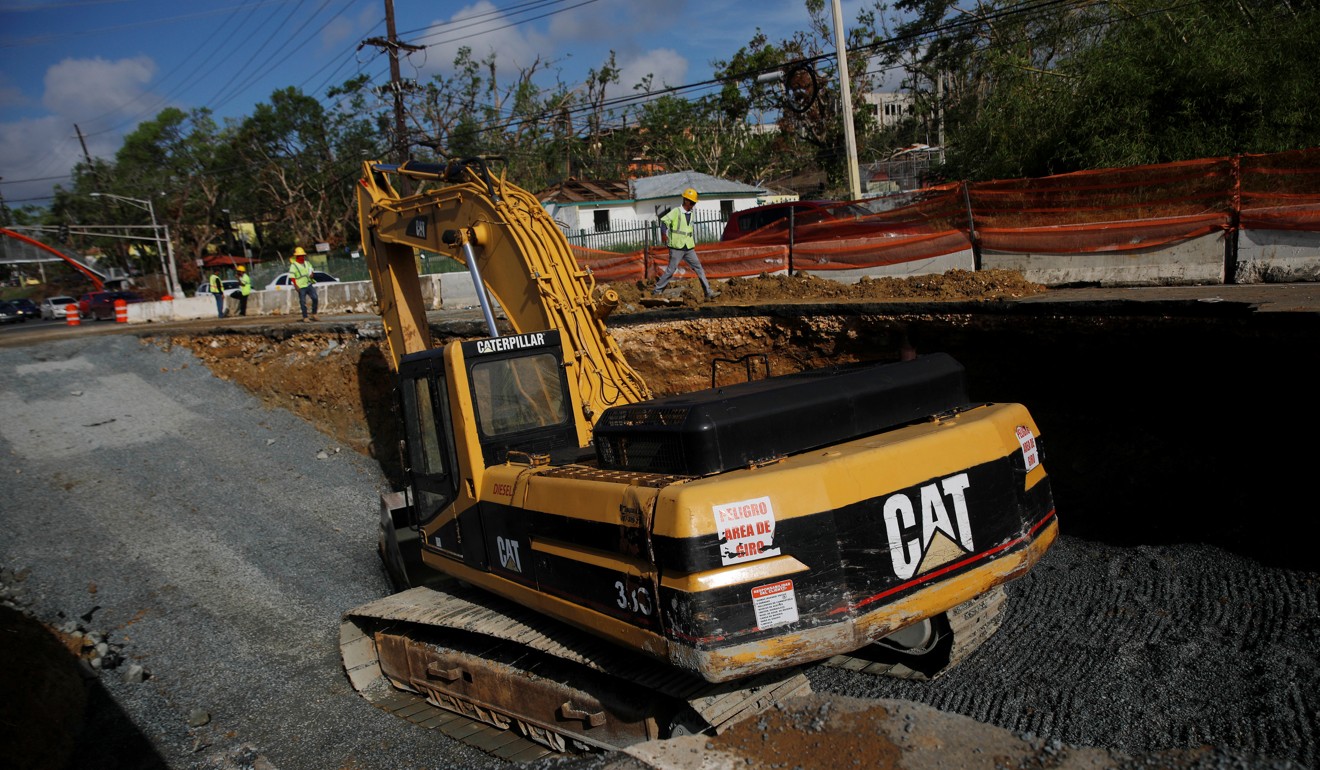
Asian companies need to insure against the new normal of extreme weather
Companies in Asia generally do not have sufficient insurance cover for natural catastrophes, leaving them dangerously exposed as a high occurrence of extreme weather events becomes the new normal, according to insurance experts.
So far, 2017 is set to enter the record books as the most costly of the past decade in terms of payouts related to storm damage. In the United States alone, Hurricanes Harvey, Irma and Maria wrought damage resulting in about US$100 billion in claims, according to calculations by Munich Re last week.
The insurance loss related to storm damage in the US over the past 10 years has averaged US$46 billion annually.
On a global basis, the 10-year average for economic losses related to natural catastrophes is US$163 billion, according to Swiss Re data.
“Comparing this against the average for insured losses of US$46 billion, we can see an insurance gap of US$117 billion or 72 per cent,” said Lei Yu, managing director of Marsh Hong Kong and Macau.
“While some losses may not be insurable, businesses evidently lack sufficient coverage for natural catastrophes.”

Chan Kin Por, the legislator for the insurance sector in Hong Kong, said the record insurance payout will awaken companies to the need for insurance coverage against natural catastrophes.
“The damage caused by the hurricanes in the US and the typhoon in Hong Kong and Macau this year was huge. It is going to lead companies to be aware of the danger and to buy the coverage,” Chan said.
Even with the record high payout by insurance companies this year, Chan believes insurance premiums charged on policyholders will not rise substantially next year.
“There may be some adjustment up of the price but it is not likely to be substantial. The heavy payouts are usually absorbed by large international insurance companies. They should be able to absorb the loss and have no urgent need to raise insurance premium substantially,” Chan said.
Munich Re posted€a 1.4 billion euro (US$1.63 billion) loss for the third quarter after making claim provisions of€2.7 billion euros.
Canadian insurer Manulife reported third quarter profit fell 1 per cent after it made a provision of C$240 million (US$189.24 million) for claims related to the three hurricanes that struck the US.
Based on estimates from Munich Re and Swiss Re, the total insured losses for natural catastrophes in the first half amounted to US$20 billion, which is below the 10-year average of US$29 billion.
However, the second half has seen an unusually high number of major storms hitting the US and Caribbean countries.
According to estimates from Munich Re and AIR Worldwide, insurance losses arising from Hurricane Irma in the United States and the Caribbean will range from US$32 billion to US$50 billion, while losses for Hurricane Harvey are estimated at between US$20 billion and US$50 billion.
In Hong Kong, Macau and southern China, it is estimated that Typhoon Hato and Severe Tropical Storm Pakhar resulted in insurance payouts of at least HK$1 billion (US$130 million) from Hong Kong insurers.
In general, Asian companies are less inclined to take up insurance coverage compared to their North America counterparts.
“Economies across Asia need to address their financial disaster readiness if they are to cope with the fallout from events that are both more frequent and more costly. Insurance coverage is a powerful component of disaster risk management, ensuring that firms have sufficient liquidity to manage any disruption,” Yu said.

